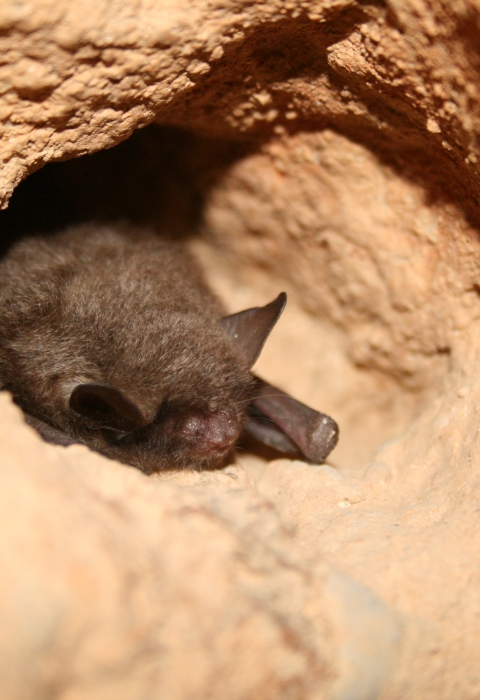We at the U.S. Fish and Wildlife Service are seeking public input on a draft plan to conserve imperiled bats on some forested lands in three Midwestern states. The Lakes States Draft Habitat Conservation Plan is part of applications by the natural resources departments of Michigan, Minnesota and Wisconsin for three separate incidental take permits under the Endangered Species Act for forest management activities that may affect four bat species.
“We welcome the initiative of the states of Michigan, Minnesota and Wisconsin as they seek to conserve bats while carrying out responsible forest management,” said Lori Nordstrom, assistant regional director for the Midwest Region of the U.S. Fish and Wildlife Service. “Forest landowners play a pivotal role in the conservation of wildlife, including for many bat species.
Participation in this plan is voluntary. If the plan is approved and permits issued, eligible forest landowners and managers who choose to sign on will have certainty that their activities will not violate the Endangered Species Act.
Species covered in the draft plan include the federally endangered Indiana bat, the threatened northern long-eared bat, and two species of concern, the tri-colored bat and the little brown bat. All four species use forested lands for roosting, foraging and raising pups in spring and summer. These bats hibernate in caves or abandoned mines during the winter.
Habitat conservation plans are agreements between the U.S. Fish and Wildlife Service and a landowner, private company or non-federal agency allowing them to undertake otherwise lawful activities on their property that may result in the incidental, or unintentional, “take” “take”
The term “take” means to harass, harm, pursue, hunt, shoot, wound, kill, trap, capture, or collect, or to attempt to engage in any such conduct.
Learn more about “take” (harming, harassing, killing) of a federally endangered or threatened species. Permit applicants must minimize and mitigate the impact of the incidental take caused by their actions.
The draft habitat conservation plan developed by the three states is designed to avoid or reduce unintentional take of the covered bat species. The plan also provides measures to alleviate impacts of forest management on the bats when unintentional take occurs.
The draft Lake States plan outlines conservation measures to be carried out during forest management actions. If we approve the habitat conservation plan and issue the incidental take permits, eligible non-federal landowners, including states, tribes, local governments and private landowners, may sign on to the permit for their state if they adopt the plan's bat conservation measures.
The Michigan Department of Natural Resources is applying for an incidental take permit for the endangered Indiana bat, the threatened northern long-eared bat, and two species of concern, the tricolored bat and little brown bat. Minnesota DNR and Wisconsin DNR are applying for incidental take coverage for the northern long-eared bat, tricolored bat and little brown bat. The states will implement measures of the habitat conservation plan specific to their state.
If issued, the permits would cover incidental take resulting from forest management activities like timber harvest; forest-related road and trail construction, maintenance, and use; and prescribed fire. Covered lands for the Lake States habitat conservation plan include all forestlands not owned or managed by the federal government within the three states of Michigan, Minnesota, and Wisconsin.
The permits, if issued, would cover unintentional take of these bats resulting from activities that support forest management on large tracts (generally more than 10,000 acres) of non-federal forested lands, or smaller tracts of non-federal forested lands that contain known hibernation sites or maternity roosts within the three states. Participation in the conservation plan is completely voluntary. Only a fraction of the eligible lands are expected to be enrolled if permits are issued.
To offset any incidental take of the bats, the states propose to avoid certain activities during the pup-rearing season and to conduct species habitat protection, enhancement and restoration. The conservation strategy is expected to benefit bats through forest management which protects potential habitat for bats; site-level maintenance and promotion of roost trees and foraging habitat; the protection and management of covered species’ habitat; the protection and enhancement of hibernation sites; and other specific measures that minimize or avoid effects to the covered species.
We are seeking public comment on the Lake States Draft Habitat Conservation Plan and will accept comments received or postmarked on or before September 28, 2022.
A virtual information meeting will be held on Thursday, September 8, 2022, at 6:00 p.m. ET to provide information about the HCP and answer questions. For information on how to join the meeting, visit the Lake States HCP website on or after August 29, 2022.
You may view the draft habitat conservation plan, along with a draft environmental assessment and other documents, online in Docket No. FWS-R3-ES-2022-0091 at https://www.regulations.gov on or after August 29, 2022.
You may submit written comments by one of the following methods:
- Online: https://www.regulations.gov. Search for and submit comments on Docket No. FWS-R3-ES-2022-0091.
- U.S. mail: Public Comments Processing, Attn: Docket No. FWS-R3-ES-2022-0091; U.S. Fish and Wildlife Service; 5275 Leesburg Pike, MS: PRB/3W; Falls Church, VA 22041–3803.
In your comment, please specify whether your comment addresses the proposed HCP, draft EA, or any combination of the aforementioned documents, or other supporting documents.
Learn more about the draft Lake States Habitat Conservation Plan.



